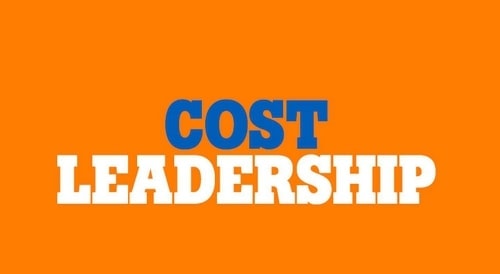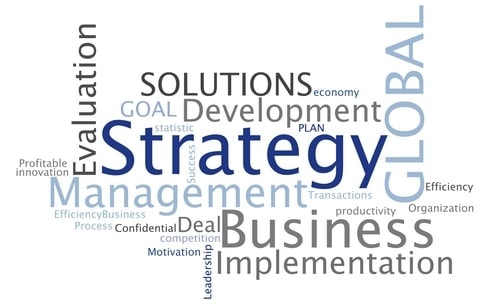Strategy is a word when pronounced, the hearer picturizes a crouched person, alert and ready to attack at his enemy with focus, discipline and most importantly, with patience. In Business terms, Strategy could be understood as a plan to beat competitors. Add a prefix and it will define the respective term. Business Strategy is a business plan devised to beat competitors.
It was developed back in 1980 by Michael Porter and it was classified under Generic Strategies. Porter is known for “Porters Hypothesis”, “Porters Five Forces” and “Porters Four Corner Model.” Porter wrote that the generic strategy, whichever the company chooses, reflects the choices made regarding both the type of competitive advantage and the scope. In other words, the choice of the company determines the type of advantage they gain over competitors.
He classified them Types of Business Strategy – Cost leadership, differentiation, and Focus Strategies. Now commonly known as Porter’s Generic Strategies, they are commonly used by many firms worldwide. Porter suggested that any business firm can use only one strategy at a time and using multiple strategies is not advisable and would lead to the ultimate failure of product or firm in the market. The Types of Business strategies being used will depend on goals – short and long, target market, industry and competition of the firm. The success of these strategies will obviously depend if the firm is able to draw above industry profit margin while being the market leader.
Table of Contents
1) Cost Leadership Strategies :
A strategy where the firm prices its products at the lowest possible cost, in order to penetrate and/or sustain its position of leadership is Cost Leadership Strategy. The appeal of the product is for cost-conscious people. In other words, the price-sensitive class of customers is the target segment of the firm and all the business activities are planned accordingly, right from procurement of raw materials to distribution and marketing. It is one of the types of Business strategies used by top firms such as Walmart and Amazon, who sell products on the promise of low costs.
Thinking from a company’s point of view, suppose a firm wants to manufacture cheap mobile phones. Now here, the means, as well as the ends of this, would be to keep the costs low so that the final product is priced accordingly while keeping the profit margins undisturbed. One way to achieve this is to reduce Operating costs which will reduce the production cost while retaining profits, another way is achieving economies of scale, wherein the firm will do a mass production by overusing the assets and third way would be maintaining a control over value chain like bulk buying to reduce procurement costs.
To reduce Operating costs, you need to standardize the product and achieve a humungous output. This reduces the overheads and spreads fixed costs throughout. The wages are low, the rent of area is kept low and only a few pieces of equipments are used to achieve a uniformity of product while reducing costs considerably. Even outsourcing in few cases can be considered as reducing the costs.
High use of assets is another way, wherein the company will keep high volumes of output while using their assets on a large scale to achieve larger output. Overuse of assets will cause the fixed costs to spread over the products, thus reducing per unit cost and achieving Economies of Scale. For many industries, this is a means as well as the end result to achieve a low cost of production and in turn, achieving cost differentiation.
To maintain control over the value chain, the firm should achieve control over all functional groups like procurement, finance, inventory etc. Procuring in bulk from a known vendor or unique access to raw materials, achieving high-efficiency inventory management (FIFO, LIFO), Just-in-time purchasing would be few ways to achieve this. McDonald’s initially achieved Cost leadership through a mix of all three methods. In the case of a service industry, a major player would be Air Asia, a low-cost Asian flight operator which operates only in Asia at a very low cost.
The cost leadership strategy can be utilized by large firms and market leaders but not by new firms which are small or medium scale. The risk in applying this strategy is customer retention – if a competitor launches product priced even lower, the possibility of customer retention nullifies. Also increasing costs and economic fluctuation can seriously affect the firm. Also pricing the product below industry average while maintaining the quality cannot be possible with every firm.
2) Differentiation Strategies :
When the product is differentiated with its unique feature or unique selling point (USP) in order to compete and win effectively, that is known as the differentiation strategy. Differentiate your product or service, whatever it may cost and offer to customers on a higher price (usually niche market). It is a Type of Business Strategies used by Apple, a company that promises differentiated products to its customers.
This strategy is exactly opposite of Cost Strategy, whereby here the target audience is far from being price sensitive, rather they are quality conscious or quality focused and they wouldn’t mind paying extra if its something unique they are getting which helps differentiate them along with the product.
In the case of differentiation, the initial costs are way above industry average since the offering is unique which includes more patents, IPRs and there are less or no competitors and hence the pricing is premium. Unlike Cost Leadership Strategy, in case of differentiation, customer loyalty is very high, just as profit levels and this forms an advantage. This also involves high cost of production per unit but it can be easily recovered from the above average pricing of the product. Unlike Cost leadership, many organizations can follow this strategy with their unique offerings.
The products of Apple, Rolls Royce cars form some examples of this Strategies.
In the case of services, the point of differentiation would be employee courtesy, availability, expertise and location. In spite of being almost identical, product and services can be differentiated with the help of promotions and advertising, however, the advertising for these niche products should be unique and appealing.
For ex: There has never been a celebrity endorsement for any iPhone since its inception to the recent iPhone XS and XS Max, while even Google Pixel is seen following a similar strategy for its newly launched Pixel 3 or one would find advertisement of Audi or Luxury cars or Watch brands like Tag Heuer, Rolex, and Patek Phillipe only in Business Magazines targeting businessman.
3) Focus Strategies :
As the name suggests, this strategy is applied only for a selected audience of the small market with specialized needs. The target market has unique needs and it is to cater these needs that firms focus on. It is up to the firm to charge the premium or keep it below average for these products. Usually, the firm to implement this strategy would choose the target market with low or no competitors and with the aim to achieve competitive advantage. It is one of the strongest Types of Business strategies because it has a definite demand in the market. This strategy should target market segments that are less vulnerable to substitutes or where a competition is weakest to earn the above-average return on investment.
Focus Type of Business Strategy is divided into two parts viz Focused Cost Strategy and Focused Differentiation strategy. In cost focused, the prices are tailored for the particular need to cater specific group of people. This doesn’t mean the prices are lower, on the contrary, the prices may be higher.
Ex: Chrysler vehicles has cars for regular people as well as for handicapped audience tailor-made according to their needs. Breyers Ice cream have developed special Sugar-free ice creams which are promoted as “NO SUGAR ADDED” targeting specifically to health conscious and diabetic people.
For ex: Commuters in Stockholm get a pass for metro which may be either monthly or weekly. This pass is priced at a lower price than regular unit ticket but this pass will not be valid for Airport Metro, which although run by the same company, charges higher than the usual fare. In case of Focused differentiation strategy, firms that compete based on uniqueness and target a narrow market are following a focused differentiation strategy. These firms focus on the special needs of customers and cater only to them. It may or may not have products for regular customers.
Final words, the choice of strategies as well as their implementation is crucial for business firms since the choice of strategy will help the firm in achieving sustainable competitive edge and it would also assist in long and short-term business decisions. Besides vital decisions like Marketing, budgeting, Sales forecasting, and business expansions are based on the choice and implementation of the strategy.
Thank you for reading and learn about corporate strategy.
Liked this post? Check out the complete series on Strategy


Hi Hitesh,
Was perusing the net when I came across your article on types of strategies and found it indeed made a very interesting read.
In normal business terms we use this on a very regular basis and though the economies of scale are largely a determining a factor, most businessmen I know or with who I have had an interaction, do not take the matter seriously. Many infact, even feel that they must either avoid marketing totally, or keep it to the minimum (thereby trying to reduce costs), which needless to state affects their sales. I have many a times tried to impress on them to consider marketing costs as an investment rather than an expense. Those who heed, obviously over period of time thank me but the other breed is far clever by half, who will learn only when they approach doom!
Over all nice article… Hope to find more..
Regards,
Shashank